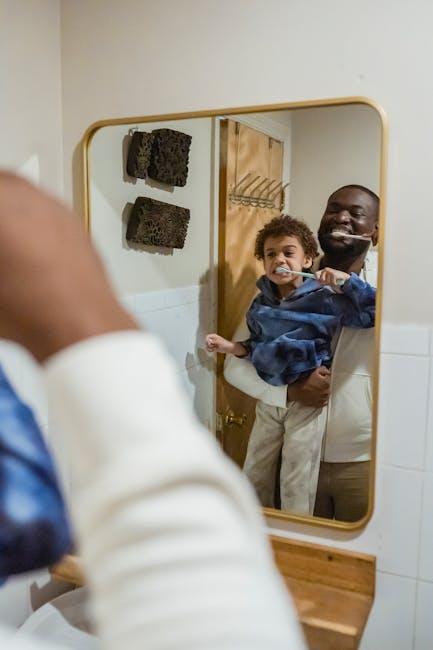Comparison of Children’s Preferences for Dental Injectors and Their Impact on Cooperation During Local Anesthesia Injection: An Observational Study
Local anesthesia injections are an essential part of pediatric dental treatments but often represent a significant source of anxiety and discomfort for children. This anxiety sometimes affects their cooperation during procedures, escalating the challenges faced by dental professionals. Understanding children’s preferences for dental injectors is critical for optimizing their experience and cooperation during local anesthesia injections.
In this article, we discuss a recent observational study published in Cureus, comparing various types of dental injectors preferred by children and how these preferences influence their cooperation throughout the injection process.
Why Children’s Preferences for Dental Injectors Matter
Children’s attitudes towards dental treatments are often shaped by how comfortable and safe they feel during procedures. The type of dental injector used—not only its design but also its perceived pain and fear factor—can dramatically impact a child’s willingness to cooperate.
Key Factors Affecting Cooperation During Local Anesthesia
- Type of injector used: Conventional syringes, computer-controlled local anesthesia delivery (CCLAD) systems, or newer jet injectors.
- Visual appearance and size: Child-friendly designs can reduce fear.
- Pain perception: The injection’s discomfort level influences anxiety.
- The child’s previous dental experiences: Past traumatic memories can increase hesitation.
Overview of the Observational Study from Cureus
The study examined 120 children aged 4 to 12 undergoing dental procedures that required local anesthesia. Researchers documented children’s preferences towards three types of dental injectors and measured their cooperation levels using standardized anxiety and cooperation scales.
Dental Injector Types Compared
- Traditional Syringe Injector: Standard manual syringe with needle.
- Computer-Controlled Local Anesthetic Delivery (CCLAD): Device regulating the flow rate to reduce injection pain.
- Needle-Free Jet Injector: Uses high pressure to deliver anesthetic without a needle.
| Dental Injector Type | Child Preference (%) | Average Cooperation Score (1-10) | Common Feedback from Children |
|---|---|---|---|
| Traditional Syringe | 30% | 6.2 | “Feels scary but quick.” |
| CCLAD System | 50% | 8.4 | “Smoother and less painful.” |
| Needle-Free Jet Injector | 20% | 7.1 | “Weird but no needle!” |
Impact of Preferences on Cooperation
The study clearly indicated that a higher preference for the CCLAD system correlated with improved cooperation and lower anxiety scores. Children who favored this system described the injection as less painful and less intimidating, boosting their willingness to remain calm and follow instructions.
Why Does CCLAD Improve Cooperation?
- Controlled flow rate: Slows anesthetic injection to minimize tissue trauma and pain.
- Consistency: Predictable injection experience reduces fear of surprises.
- Technology appeal: Some kids find modern devices less scary compared to traditional needles.
Exploring Needle-Free Jet Injectors
Needle-free jet injectors were intriguing to many children due to the lack of needle visibility, which reduced anxiety for some. However, unfamiliar sensation and noise levels caused discomfort for others, affecting overall cooperation less positively than the CCLAD system.
Benefits of Tailoring Injector Choice to Children’s Preferences
Dental practitioners adopting child-preferred injectors have reported numerous benefits:
- Reduced dental anxiety: Promotes a more relaxed dental environment for children.
- Increased cooperation: Improves procedure efficiency and safety.
- Enhanced patient satisfaction: Positive experiences encourage timely return visits and better oral health maintenance.
Practical Tips for Dental Professionals
- Assess child’s anxiety level: Use behavioral scoring scales before anesthesia.
- Introduce the injector gently: Explain and visually show the tool in a friendly way.
- Offer choices when possible: Empower the child by letting them select their preferred injector type.
- Combine with distraction techniques: Engage children with videos, stories, or toys to divert focus from the injection.
- Train staff: Ensure dental assistants are proficient in using advanced injectors like CCLAD and needle-free devices.
Case Study: Real-Life Experience with Injector Preferences
Jessica, an 8-year-old patient with dental anxiety, previously refused treatments due to fear of needles. During her recent visit, the dentist offered her a choice between the traditional syringe and the CCLAD system. Jessica chose the CCLAD device after being shown how it works. The procedure was significantly smoother, and she reported “not feeling much pain.” Her cooperation improved dramatically, enabling timely completion of her dental treatment.
Conclusion
The observational study published in Cureus offers clear evidence that children’s preferences for dental injectors play a significant role in their cooperation during local anesthesia injections. Dental professionals who prioritize child-friendly injectors, particularly computer-controlled systems, can effectively reduce pain and anxiety, promoting a better treatment experience.
Integrating children’s feedback on injector type with empathetic communication and distraction strategies ultimately supports a more successful pediatric dental practice. If you are a dental caregiver, considering these findings could enhance your patient outcomes and foster lifelong positive dental attitudes.
Start transforming your pediatric dental care today—choose injectors that children prefer and watch cooperation flourish!


